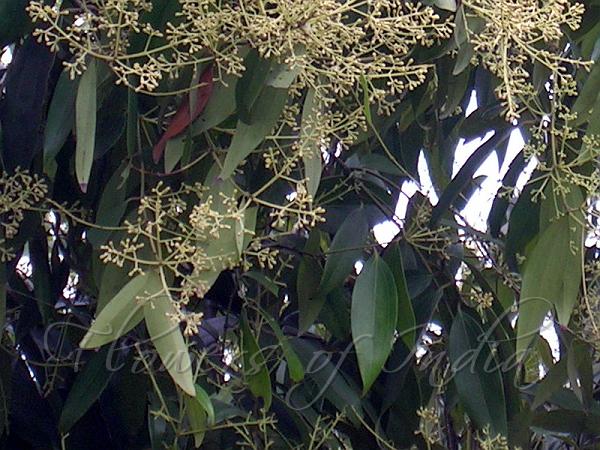|
| Indian Bay Leaf |
|

|

| File size | 218550 |
| Original date | 3/24/08 9:58 AM |
| Resolution | 2048 x 1536 |
| Flash | Flash did not fire, auto |
| Focal length | 16.2mm |
| Exposure time | 1/54s |
| Aperture | 4.9 |
| Focus Distance | |
| Metering Mode | Multi-segment |
| Camera make | NIKON |
| Camera model | E3700 |
| Sensor type |
|
|
|
|
Photo: |
Botanical name: Cinnamomum tamala Family: Lauraceae (Laurel family)
Synonyms: Cinnamomum albiflorum, Laurus tamala
Synonyms: Cinnamomum albiflorum, Laurus tamala
Indian bay-leaves are the leaves of a tree closely related to
Cinnamon. The tough, three-veined leaves are
very popular in Northern India, but are little known elsewhere — at least,
today. They were well known to the Romans under the name malobathrum (also
spelt malabathrum) and used both for perfumery and in cooking. The name Bay
Leaf is used for some other plant (Laurus nobilis). So, this one is called
Indian Bay Leaf. It is a small to moderately sized ever green tree. Plants
are raised from seeds sown in nursery beds in March-April. Seedlings are
transplanted to the field in rows of 2 m apart with a spacing of 3 – 3.5 m
between plants. Leaves are collected in dry weather every year from
vigourous plants, dried in the sun and tied up into bundles for marketing.
Flowers are tiny, greenish yellow, insignificant.
Today, Indian bay-leaves are a spice used almost exclusively in the
kitchens of Northern India, especially in the famous Moghul cuisine that
was developed at the Imperial courts in Delhi and Agra. One example of such
a dish is biriyani बिरयानी.
| Identification credit: Tabish | Photographed in Delhi & Manipur. |
• Is this flower misidentified? If yes,